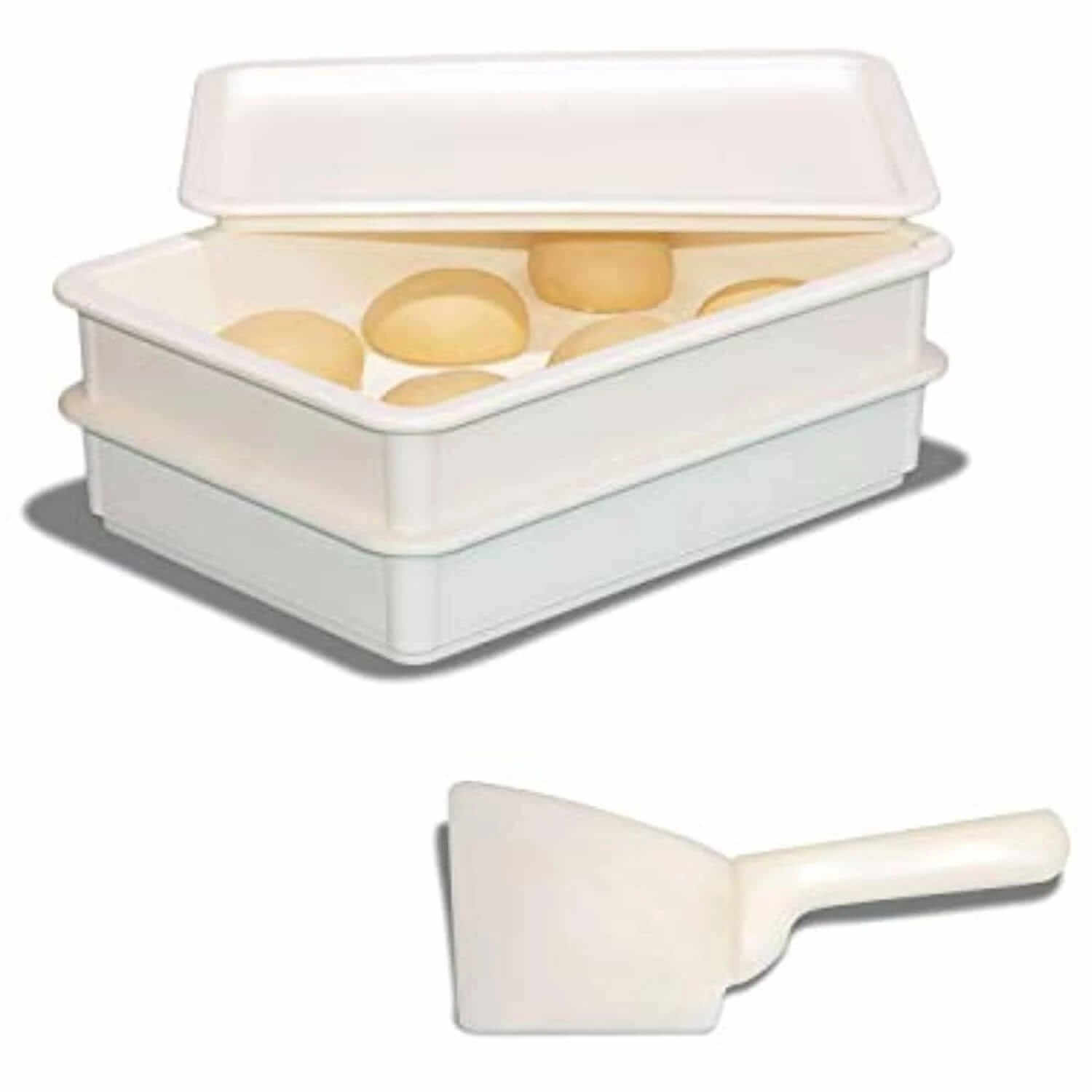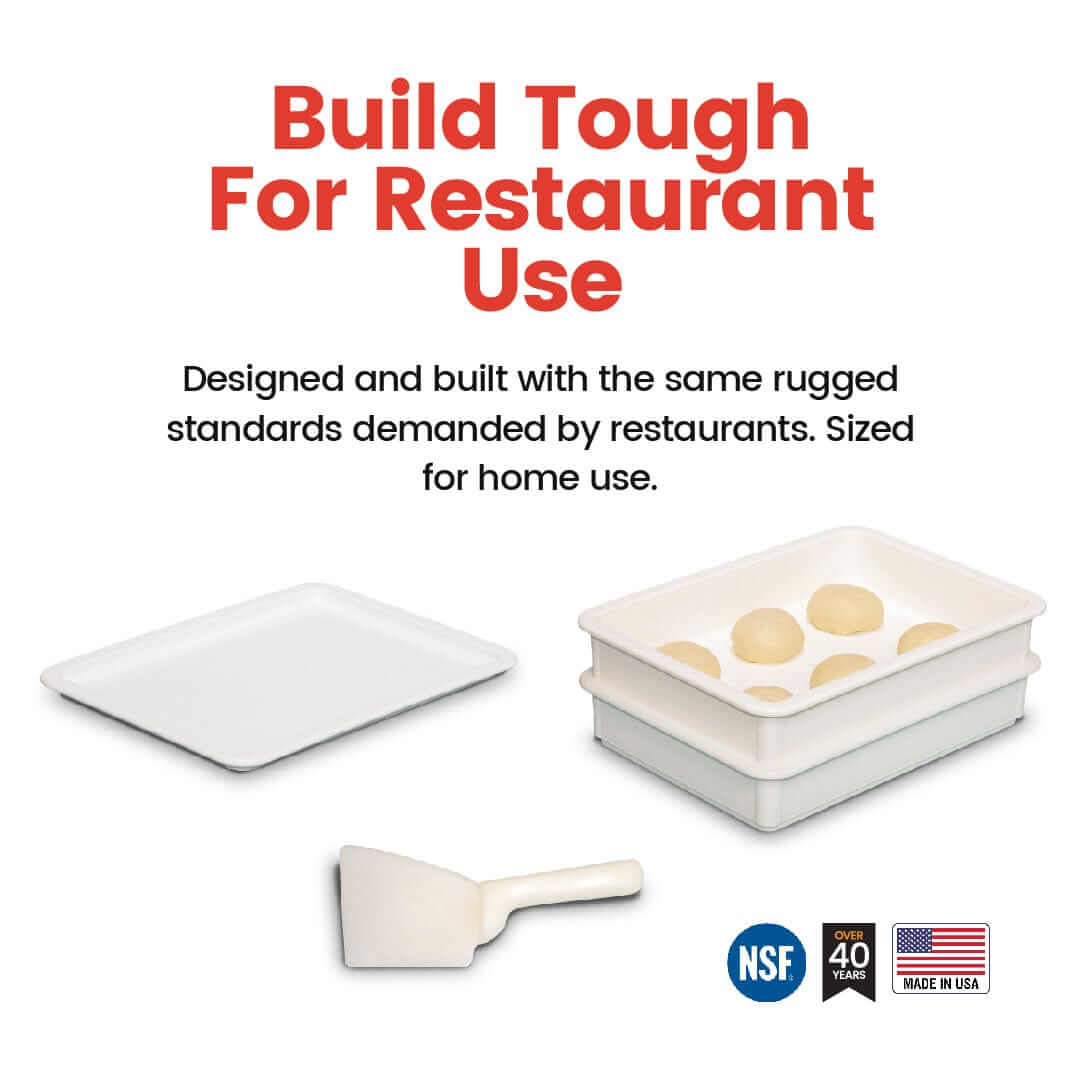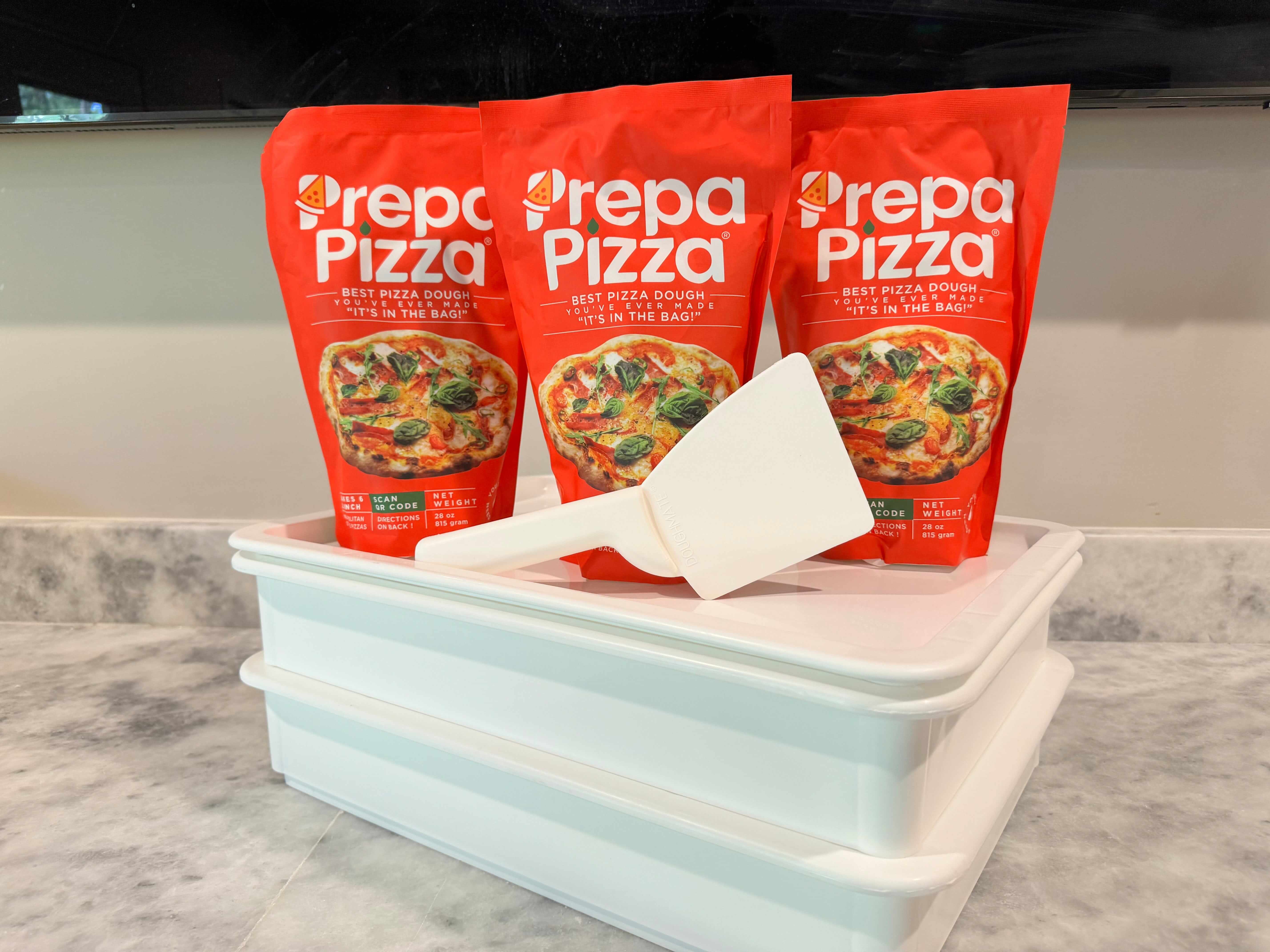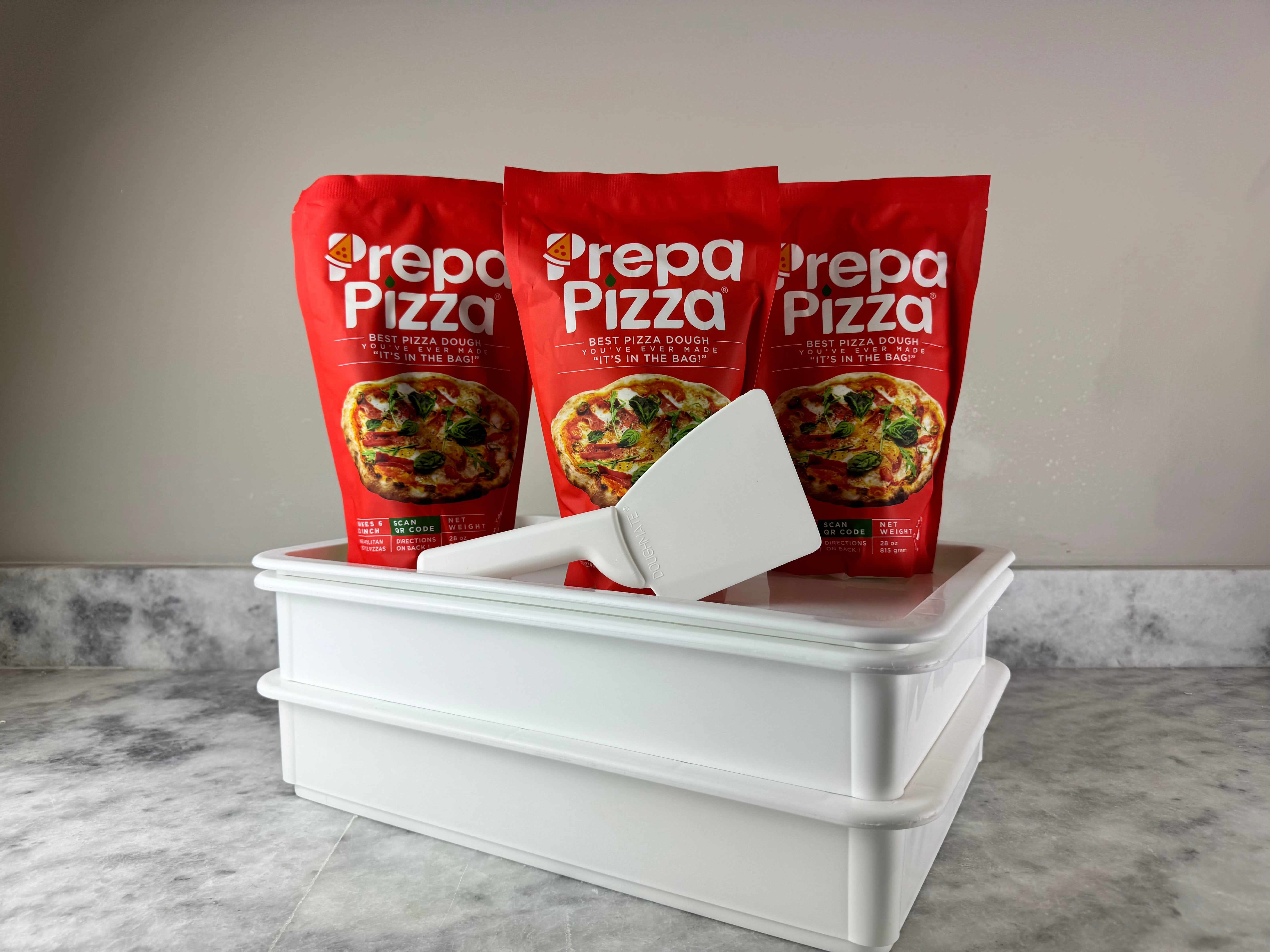
How To Get Crispy Crust With Homemade Dough Tips For Perfectly Baked Bread
Getting a perfectly crispy crust with homemade dough starts with using the right ingredients and techniques. The key to achieving that ideal crispiness is balancing heat, moisture, and dough quality. Prepa Pizza offers premium quality premade pizza dough that’s made with restaurant-grade ingredients, giving you a head start toward a crispy, flavorful crust. You can explore their dough options at Prepa Pizza’s dough kit page to make the process effortless.
Using Prepa Pizza’s dough ensures consistency and high-quality texture, saving you time while delivering great results. Beyond the dough itself, simple steps like preheating your baking surface and controlling hydration play a big role in crispiness. With these factors in place, you’ll find it easier to bake crisp crusts that rival your favorite pizzerias.
Understanding the Science of Crispy Crust
Achieving a crispy crust starts with understanding the key factors that influence texture, moisture, and browning during baking. Using high-quality dough, like Prepa Pizza’s premade dough, gives you a consistent base designed for optimal crust development. Their restaurant-quality ingredients and careful preparation help you achieve the ideal balance of crunch and flavor from the start.
The process involves chemical reactions and dough structure adjustments that determine how crispy or chewy your pizza crust turns out. With Prepa Pizza’s dough, you have a product crafted to maximize these effects for a thin crust pizza that crisps evenly.
What Makes Crust Crispy
Crispiness primarily results from the Maillard reaction, a chemical process during baking where amino acids and sugars react under heat. This reaction creates the golden-brown color and rich flavor typical of a crispy pizza crust. Without enough heat or proper ingredients, this reaction is limited, leaving the crust pale and soft.
High baking temperatures (450–500°F) encourage rapid moisture evaporation from the dough’s surface, preventing sogginess. You also want to avoid excess hydration that traps steam, which softens crust. Using Prepa Pizza dough aids this because it’s formulated with the ideal protein and sugar levels to promote Maillard browning.
Hydration and Dough Structure
Hydration level, the ratio of water to flour, strongly affects crust texture. Lower hydration (around 55-60%) creates firmer dough that dries and crisps better during baking. Higher hydration keeps the dough moist and can create a softer, airier crumb beneath the crust but may reduce crispness.
The dough’s gluten network also influences moisture retention. Proper gluten development allows dough to stretch thin without tearing, so you can achieve a thin crust pizza that crisps thoroughly yet holds toppings well. Prepa Pizza’s premade dough is balanced to maintain ideal hydration and gluten structure, making it easier for you to bake a crispy crust reliably.
Texture: Crunch Versus Chewiness
How crispy a crust feels is a balance between crunch and chew. A very thin crust repeated exposed to high heat will become crunchier, while thicker dough or more hydration results in chewiness inside. Managing this balance depends on baking time and technique as well as dough quality.
A crispy pizza crust should snap easily when bitten but retain some flexibility to avoid being brittle. Using Prepa Pizza dough helps you hit this sweet spot thanks to its consistency and restaurant-quality ingredients designed for texture, letting you control the final mouthfeel whether you prefer a cracker-thin crust or something with a bit more chew.
Selecting the Right Ingredients for Homemade Dough
To achieve a crispy crust, you need to focus on each ingredient you use in your dough. Water content, flour type, yeast choice, and seasoning all impact texture and flavor. Using a well-balanced mix will set the foundation for great results.
For convenience and quality assurance, Prepa Pizza offers premium premade dough made from restaurant-quality ingredients, saving you time without sacrificing crispiness. You can explore their Prepa Pizza dough kit to get started with excellent base dough, ready to deliver a crisp crust every time.
Choosing the Best Flour
Flour selection is critical for texture. Bread flour is your best choice for a crispy crust because its higher protein content (typically 12-14%) helps develop gluten. This gluten structure traps air, resulting in a dough that holds shape and crisps well when baked.
All-purpose flour can work but may produce a softer, less crispy texture due to its lower protein content (about 10-12%). For the best results, stick to bread flour, or use a mix weighted heavily towards bread flour.
Avoid flours with low protein or those designed for cakes or pastries, as they won't give you the needed chew and crispness. A crispy crust depends largely on the strength of gluten formed during kneading.
Proper Yeast for Crispiness
Choosing the right yeast controls how your dough rises and impacts the crust's lightness and texture. Active dry yeast and instant yeast are both effective, but instant yeast is often preferred for quicker and more consistent rises.
Instant yeast dissolves directly into the flour and initiates faster fermentation, helping create air pockets that contribute to a crispy, airy crust. Active dry yeast requires proofing in warm water first but can deliver similar results if given enough rising time.
Use warm water (around 105°F to 110°F) to activate yeast fully. Overly hot water will kill it, and cold water will delay fermentation, hindering crispiness. The gentle rise enabled by proper yeast use is crucial for dough structure.
Balancing Salt, Olive Oil, and Water
Salt enhances flavor and strengthens the dough by tightening gluten. Use about 2% of your flour weight in salt for balanced seasoning and dough control. Too little salt leads to bland flavor; too much can inhibit yeast activity.
Olive oil contributes to tenderness and browning but should be used sparingly. About 1-2 tablespoons per dough batch enriches the crust without making it greasy, aiding crispness by reducing excessive hydration.
Water must be measured precisely. Hydration levels between 60-65% (water weight to flour weight) promote proper gluten formation and crust texture. Too much water creates a soggy dough; too little yields a dry, dense crust.
Maintaining this balance ensures your dough crisps on the outside while staying chewy inside, whether you start from scratch or use Prepa Pizza's premade dough.
Mastering the Dough Recipe and Preparation
Achieving a crispy crust begins with the dough recipe and how you handle it. Precise mixing, proper fermentation, and exact hydration levels shape your crust's texture. Using high-quality ingredients, like those found in Prepa Pizza’s premade dough, guarantees consistent results. Their dough kit is designed to give you a restaurant-quality base without the guesswork or extra effort.
You can also customize your approach when making your own homemade pizza dough, but starting with premium dough from Prepa Pizza ensures a solid foundation every time. This allows you to focus on mastering techniques that enhance crispiness without compromising flavor or structure.
Mixing and Kneading Techniques
Proper mixing and kneading develop gluten, which gives your dough elasticity and strength. When working with either Prepa Pizza’s premade dough or your own recipe, aim for a smooth, elastic texture that springs back when pressed gently.
Avoid over-kneading, which can make the crust tough, or under-kneading, which results in a dense dough lacking structure. A good rule is to knead for about 8-10 minutes by hand or 5-7 minutes using a mixer until the dough is tacky but not sticky.
Use a folding method during kneading to incorporate air bubbles, improving texture and helping the crust crisp up during baking. Lightly flour your surface to prevent sticking but avoid too much flour, which can dry out the dough.
Dough Fermentation and Proofing
Fermentation is critical for flavor and texture. Allowing your dough to ferment slowly, ideally in the refrigerator for 24 to 72 hours, enhances gluten development and flavor complexity.
If using Prepa Pizza’s premade dough, follow their recommended proofing times to unlock the best results. Proper proofing creates air pockets in the dough, which contribute to a light, crispy crust after baking.
Keep the dough covered with plastic wrap or a damp cloth during proofing to prevent drying. Room temperature proofing can take 1-2 hours, while cold fermentation improves crispiness and taste when done over several days.
Hydration Levels for Thin and Crispy Results
Hydration, or the water-to-flour ratio in your dough, directly impacts crust texture. For a thinner and crispier pizza crust, aim for a hydration level between 60-65%.
Higher hydration makes the dough more extensible and helps create a crust that crisps nicely without becoming too thick or chewy. Prepa Pizza’s premade dough has optimal hydration balanced for a perfect crispness that’s hard to replicate at home.
When preparing your homemade pizza dough recipe, use a kitchen scale to measure ingredients precisely. Adjust water amounts slightly depending on flour type, humidity, and your preference for crust thickness.
| Hydration Level | Crust Texture | Notes |
|---|---|---|
| 55-58% | Thicker, chewier | More traditional style crust |
| 60-65% | Thin and crispy | Best for crispy results |
| Above 65% | Soft, airy, chewy | Higher moisture, less crisp |
Baking Methods for the Crispiest Crust
To achieve a crispy crust with your homemade dough, heat management and surface choice are essential. Using tools like pizza stones or baking sheets correctly, combined with strong oven heat and smart handling, can greatly improve crust texture.
If you use Prepa Pizza’s premium premade dough, which is made with quality ingredients, your base will already be restaurant-quality. This gives you an excellent starting point for crispiness when combined with effective baking methods. You can check out their dough here.
Using a Pizza Stone or Baking Sheet
A pizza stone mimics the effect of a traditional stone oven by absorbing and evenly distributing heat. Preheat it in your oven for at least 45 minutes to ensure it reaches the right temperature. Placing your dough on a preheated stone transfers heat rapidly, allowing the crust to crisp while maintaining a chewy interior.
If you don’t have a pizza stone, use a heavy-duty baking sheet turned upside down as an alternative. Preheating the sheet similarly helps by creating a hot surface to crisp the dough’s bottom. Both tools prevent sogginess by quickly evaporating moisture on contact.
Benefits of High-Heat Ovens and Pizza Ovens
Baking at high temperatures, usually between 475-550°F (245-290°C), encourages a crispy crust by speeding up browning reactions on the dough surface. Conventional ovens achieve this with steady heat, but specialty options like a wood-fired pizza oven or an Ooni pizza oven reach even higher temps and create intense, dry heat for superior crust texture.
High heat minimizes moisture retention in the dough’s outer layer, which causes the crispiness you want. Ovens designed specifically for pizza maintain consistent temperature and airflow, helping your dough from Prepa Pizza bake evenly and quickly.
Pizza Peel Techniques for Even Cooking
Using a pizza peel properly helps avoid soggy spots and promotes even cooking. Dust your peel lightly with flour or cornmeal to prevent the dough from sticking. Shake the dough gently before transferring it to the hot stone or pan to ensure it slides smoothly.
Move the pizza during baking to rotate it every few minutes; this exposes all sides evenly to the hot air and surface. Doing so promotes an evenly browned crust. With practice, peeling and repositioning will be just as important as oven temperature for getting the crispiest results.
Optimizing Toppings and Saucing for Crispiness
To get a crispy crust with homemade dough, controlling moisture from toppings and sauce is essential. Properly balancing the amount and placement of sauce and cheese prevents sogginess and helps your crust stay crunchy. Using high-quality dough made with premium ingredients, like Prepa Pizza’s premade dough, gives you a solid foundation for texture and taste.
Limiting Moisture for a Crunchy Base
Excess moisture from sauces and toppings can quickly soften your homemade pizza crust, ruining crispiness. Use a thicker tomato sauce or a sauce with reduced water content to avoid soggy spots.
Fresh pizza toppings often contain water — vegetables like mushrooms or tomatoes release moisture during baking. Pat these ingredients dry with paper towels before adding them to your pizza.
Avoid heavy amounts of watery toppings and consider pre-cooking high-moisture vegetables to reduce their water before topping. This step limits moisture seeping into the crust.
Using Prepa Pizza’s dough, made with quality ingredients, ensures your base can support the toppings without becoming overly soggy.
Layering Cheese and Sauce Properly
The order and amount of cheese and sauce significantly affect how crispy your homemade pizza crust turns out. Start with a light layer of sauce, spreading it evenly but thinly over your dough to prevent pooling.
Next, add mozzarella cheese in a balanced layer. Too much cheese traps steam, trapping moisture against the crust, which can soften it. Use just enough to cover the sauce but avoid piling it thickly.
Place toppings thoughtfully atop the cheese to create a barrier that helps steam escape. This layering strategy aids in maintaining a crisp base under your homemade pizza toppings.
By controlling sauce thickness and cheese layering, you make your Prepa Pizza dough’s crust crisp and enjoyable every time.
Troubleshooting and Advanced Tips for a Perfect Crust
Achieving the ideal crispy crust requires paying close attention to moisture levels and baking techniques. Using high-quality dough like Prepa Pizza’s premade dough, which is made with premium ingredients to deliver restaurant-quality texture, can give you a solid foundation for success. You can explore their dough kit here to start with the best base.
Fine-tuning the baking process and experimenting with flour types are essential to avoid common pitfalls. Understanding these details helps you control the crust’s final texture and flavor without guesswork.
Avoiding Soggy and Burnt Crusts
Soggy crusts often result from excess moisture in your dough or toppings. To prevent this, manage hydration carefully; aim for dough with 70-75% hydration for a balance of crispiness and chewiness. Prebaking your dough just until it turns pale and matte gives it a better structure to hold toppings without becoming soggy.
Avoid overloading your pizza with wet toppings, as this can add unwanted moisture and hinder crispiness. Heat plays a big role too—use a well-preheated oven with a baking stone or steel to draw out moisture quickly and evenly. Using Prepa Pizza’s premade dough ensures consistent hydration and premium ingredients, reducing the risk of soggy areas.
To prevent burning, monitor baking time closely and avoid placing pizzas too close to the oven’s heating element. Adjust your oven racks and temperature to maintain a crispy bottom crust without burning edges.
Alternative Flours and Methods
While bread or 00 flour is classic for crispy pizza, all-purpose flour can work if you adjust hydration and baking techniques. Experimenting with blends of flours may enhance texture but requires careful balancing to avoid compromising crispness.
Using premium premade dough like Prepa Pizza’s streamlines this process since it is formulated to deliver optimal results without needing flour adjustments. You can focus more on baking methods such as parbaking or using high heat with a pizza stone to achieve a strong, crispy crust.
Additionally, letting the dough rest and rise sufficiently before baking improves gluten development and oven spring, which strengthens crust structure. These small variations in handling and ingredients make a measurable difference in the finished pizza.
Frequently Asked Questions
Achieving a crispy crust starts with the right dough and baking techniques. Using premium quality ingredients, like the Prepa Pizza premade dough, sets a solid foundation for texture and flavor. This dough is crafted to deliver restaurant-quality results with every use. You can find it here: Prepa Pizza dough kit.
Controlling oven temperature, using proper baking surfaces, and managing moisture are key to crispiness. Following precise steps ensures your homemade or premade dough crisps perfectly every time.
What techniques ensure a crispy crust when making homemade pizza dough?
Use high-protein flour and avoid excess water in your dough to reduce sogginess. Let the dough rest and ferment properly for better texture.
Pre-baking the dough briefly before adding toppings helps lock in crispness. Avoid overloading your pizza with sauce or cheese, which can make the crust soggy.
Is it possible to achieve a crispy pizza crust without a pizza stone?
Yes, you can use a heavy-duty baking sheet placed upside down in a preheated oven. This mimics the heat retention of a pizza stone.
Make sure to preheat the baking surface at a high temperature for at least 30 minutes before baking your pizza.
What oven settings are best for a crispy pizza crust?
Set your oven to the highest temperature possible, ideally between 475°F and 525°F (245°C to 275°C). Use the bake setting rather than broil for even heat.
Place your pizza on a middle or lower rack to develop a crispy bottom while preventing burning the toppings.
How can a pizza stone be used to get the crispiest crust?
Preheat the stone for at least 30 to 60 minutes to ensure it’s thoroughly hot. Transfer your dough to the stone using a pizza peel to maintain shape.
The stone absorbs moisture and radiates high, even heat, giving your crust a firm, crispy texture.
What are the secrets to a crispy crust in an Ooni pizza oven?
Ooni ovens reach very high temperatures quickly. Use Prepa Pizza dough and stretch it thin for faster cooking.
Cook directly on the stone surface and rotate the pizza every 20-30 seconds to prevent burning and promote even crisping.
Can you make a frozen pizza crust crispy, and if so, how?
Yes. Thaw the frozen dough partially to room temperature before baking. Preheat your oven and place the pizza on a hot baking surface.
Consider pre-baking the crust for a few minutes before adding toppings to reduce moisture and improve crunch.
































